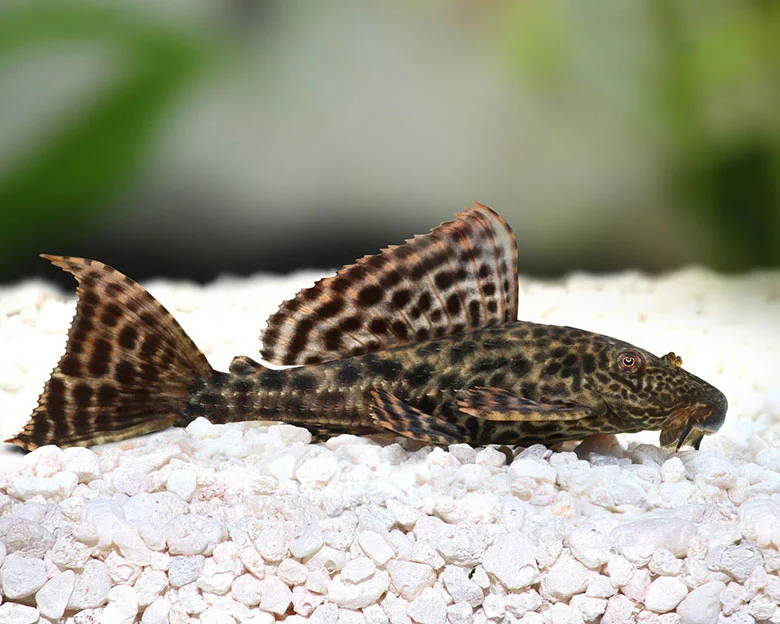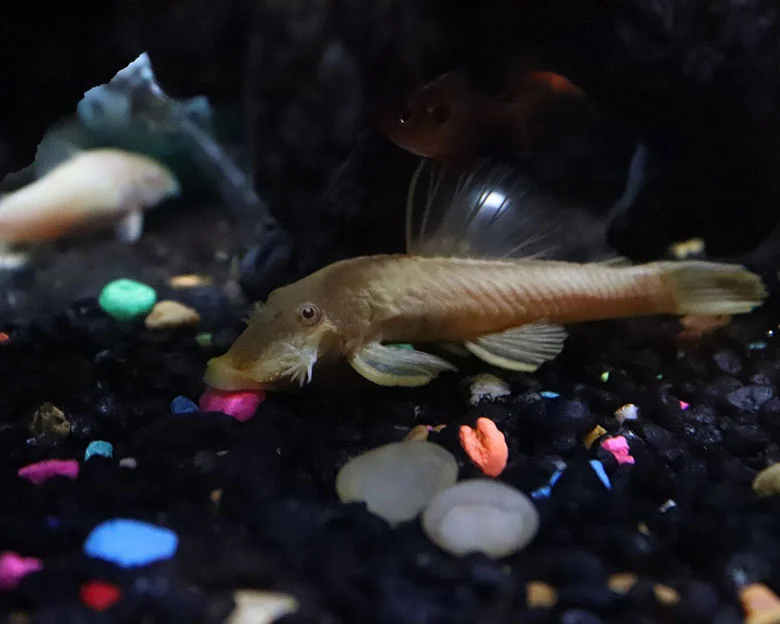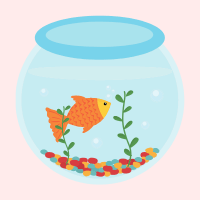Are you a proud owner of a pleco, the popular type of catfish commonly found in aquariums? Then you must know that feeding them the right type of diet is crucial for their overall health and well-being. With the wide variety of plecos available and their varying dietary requirements, it can be challenging to know what to feed them.
That’s why we are here to provide you with a comprehensive pleco feeding guide that covers the different types of plecos and their dietary needs. In this guide, we will dive into the different types of pleco diets and their specific dietary requirements according to their species.
We understand the importance of research and responsibility when it comes to caring for your fishy friends, and we will ensure that you have all the information you need to provide them with a healthy and balanced diet. So, let’s get started and learn what to feed your plecos to keep them happy and healthy!
Key Takeaways
- Different species of plecos have varying dietary needs, including herbivorous, carnivorous, and wood-eating.
- Providing the appropriate diet for your pleco’s species is crucial for their health and well-being, and feeding them the wrong food can lead to health problems.
- Herbivorous plecos require a big volume of food and can be fed with algae, Repashy Soilent Green, blanched veggies, and Omega One Veggie Rounds.
- Carnivorous plecos need a high protein diet and can be fed with Repashy Community Plus, Omega One Shrimp Pellets, frozen bloodworms, and frozen brine shrimp.
Types of Pleco Diets

If you have a pleco, it’s important to know that different types of plecos have different dietary requirements.
Herbivorous plecos, such as the common and bristlenose plecos, require a big volume of food and can be fed with algae, Repashy Soilent Green, blanched veggies, and Omega One Veggie Rounds.
Carnivorous plecos, such as zebra and sunshine plecos, need a high protein diet and can be fed with Repashy Community Plus, Omega One Shrimp Pellets, frozen bloodworms, and frozen brine shrimp.
In contrast, wood eating plecos, like clown and royal plecos, need an enormous amount of fiber in their diets and can be fed with driftwood, Repashy Morning Wood, blanched veggies, and Omega One Veggie Rounds.
To ensure that your pleco is healthy and happy, it’s important to understand their feeding habits. In the wild, plecos graze throughout the day, so it’s best to offer small portions of food multiple times a day rather than one large feeding.
Additionally, plecos are nocturnal, so it’s best to feed them at night when they are most active.
By following these guidelines and researching your specific pleco’s dietary requirements, you can provide the best feeding schedule for your fishy friends and ensure their long-term health and happiness.
Dietary Requirements by Species
To ensure your catfish is healthy, it’s important to research its species and provide the appropriate diet based on its specific dietary requirements. Also check out our article on healthy diets for Croy Catfish.
For example, the common pleco is a herbivore and requires a diet rich in plant matter such as algae, Repashy Soilent Green, blanched veggies, and Omega One Veggie Rounds. On the other hand, the zebra pleco is a carnivore and needs a diet high in protein, such as Repashy Community Plus, Omega One Shrimp Pellets, frozen bloodworms, and frozen brine shrimp.
It’s crucial to note that not all plecos are great algae eaters, and their diets vary depending on their species. Some plecos, like the wood-eating clown and royal plecos, require an enormous amount of fiber in their diets and can be fed with driftwood, Repashy Morning Wood, blanched veggies, and Omega One Veggie Rounds.
As an aquarist, it’s your responsibility to research and provide the best conditions for the fish you bring home, including their dietary needs. By doing so, you can ensure that your plecos are healthy and thriving.
Importance of Research and Responsibility
Make sure you take responsibility as an aquarist and conduct thorough research on the dietary requirements of your catfish to ensure their health and wellbeing.
Not all plecos are great algae eaters, and their diets vary depending on their species. It’s important to note that feeding your pleco the wrong food can lead to health problems, such as constipation, which can be fatal.
To be a responsible owner, you must research the species of pleco you own and provide them with the right amount and type of food. This will not only keep them healthy, but it’ll also help them thrive in their environment.
Remember that as an aquarist, you have the responsibility to provide the best conditions for the fish you bring home. Conducting research on your pleco’s dietary requirements is just one step towards being a responsible owner.
Frequently Asked Questions
How Often Should You Feed Your Plecos?
Feeding frequency for plecos depends on their species and age. Adult herbivorous plecos should be fed once or twice daily with ideal portions of veggies and algae. Carnivorous plecos can be fed every other day with high protein foods.
Can Plecos Eat Live Food?
Yes, plecos can eat live food. Feeding live food provides added nutrients and mental stimulation. Best live food options for plecos include blackworms, bloodworms, and brine shrimp. However, live food should be offered sparingly and only as a supplement to their regular diet.
What Are Some Common Mistakes People Make When Feeding Their Plecos?
Overfeeding dangers and nutritional deficiencies are common mistakes people make when feeding plecos. Feed them according to their species’ dietary needs and provide a varied diet. Avoid feeding them too much or too little to ensure their health.
How Do You Know If Your Plecos Are Getting The Right Nutrients In Their Diet?
To ensure your plecos are getting the right nutrients in their diet, research their specific dietary needs. Consider incorporating dietary supplements like Repashy Soilent Green or Omega One Veggie Rounds to provide necessary vitamins and minerals.
Are There Any Foods That Plecos Should Avoid?
Avoid feeding your plecos high fat diets and processed foods, as they can lead to health issues. Stick to a balanced diet of protein and fiber-rich foods, and include vegetables like zucchini and cucumber for optimal nutrition.
Unleash the Full Potential of Your Plecos with a Nutritious Diet!

Congratulations, you’re now armed with all the necessary information to ensure the health and well-being of your plecos! Remember, the key to providing your fishy friends with the right type of diet is to do your research.
Take the time to learn about the specific dietary requirements of your plecos and choose foods that are appropriate for their species. It’s important to remember that while plecos are low-maintenance fish, they still require proper care and attention.
Neglecting their dietary needs can lead to health issues, such as obesity and digestive problems. So, be responsible and give your plecos the best life possible by providing them with a balanced and nutritious diet.
In conclusion, feeding your plecos doesn’t have to be complicated. By following the guidelines outlined in this pleco feeding guide and doing your research, you’ll be able to provide your fishy friends with the nourishment they need to thrive.
Remember, taking care of your plecos is not only a responsibility but also a privilege. So, enjoy your journey with these fascinating creatures and give them the best care possible!

